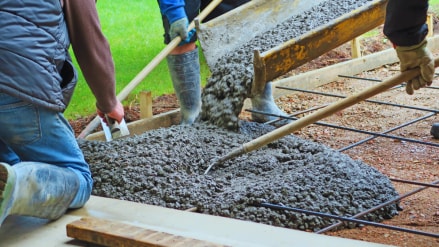Cement companies may soon find themselves playing a delicate balancing act — reaping the benefits of a proposed cut in Goods and Services Tax (GST), while deciding how much of that relief to pass down the supply chain.
According to sources close to the development, the GST Council is set to approve a cut in GST on cement from 28% to 18%. This will mean that cement companies have some headroom to lower prices at a time when the market is seeing demand softness.
Muted demand, scope for recovery
The industry is currently grappling with muted demand, weighed down by seasonal monsoon weakness and muted offtake across several regions, analysts observed. A lower tax rate, however, could give companies the flexibility to pare retail prices by Rs 10–30 per bag across markets, potentially spurring demand in the upcoming festive and post-monsoon construction season.
“We do see volume growth in Q2 (annually), but its on a low base since FY25 overall was a bad year for cement,” an analyst said. Given Q2 is seasonally weak due to monsoons, the proposed GST rate cut could help quicker recovery, the analyst added. FY25 cement demand growth was muted at 4%. For the current fiscal, companies have given a guidance of 7-8% demand growth, indicating recovery in volumes.
Market leader UltraTech Cement and challenger Ambuja Cements are pushing ahead with large-scale capacity expansion plans, deploying capex to consolidate market share. In such an environment, the ability to stimulate demand through sharper pricing without significantly denting profitability would be a welcome lever and the proposed GST cut provides precisely that cushion.
“However, the cement manufacturers will have to closely watch out for anti-profiteering provisions and see how the benefit is passed on for stock across the distribution chain,” Pratik Jain, Partner, Price Waterhouse & Co LLP said.
Balancing fuel costs and margins
Dealers expect some cost reduction after a round of price hikes took over the past week in markets like Gujarat, indicating that prices will remain flat compared to the start of August. “Our sense is that part of the benefit will pass on to us and the consumer, and part of it, the company will keep. Now it remains to be seen how much they can pass on,” a dealer said.
The government’s rationalisation package also envisages a higher GST rate on coal and lignite, the key fuels for cement kilns. While this adds to the already heavy burden of fuel inflation, analysts note the impact is likely to be manageable. This is partly because the share of coal and petcoke in the energy mix has been declining as companies gradually pivot towards alternative and greener fuels, where GST concessions are also expected.
Still, the industry remains exposed. Petroleum coke, which accounts for over half of cement makers’ fuel basket, has seen sharp price swings, compounded by a weak rupee and import dependence.
“Typically, India’s cement industry imports 12-14 Million Tons of Petcoke annually from the USA (~60%) and Saudi Arabia (~25%),” an industry expert noted.
For the sector, the net impact of the GST overhaul will hinge on how firms balance competitive dynamics, margin management, and cost headwinds. Passing on the full benefit to consumers could help companies defend or grow volumes in a crowded market, while retaining part of the tax savings may shore up profitability in a volatile cost environment.
